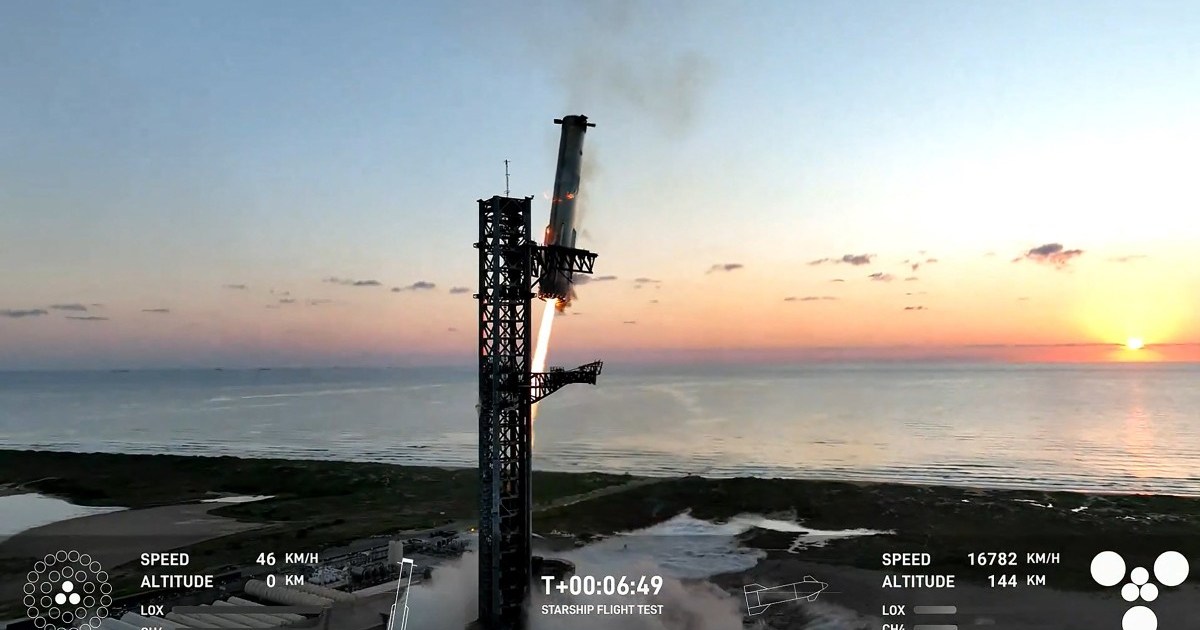SpaceX ‘catches’ giant Starship rocket booster in fifth flight test

BREAKINGBREAKING,
SpaceX’s fifth starship test flight left Texas, and it successfully returned the rocket’s towering first-stage booster to Earth. This technique uses large metal arms to achieve novel recovery.
The rocket’s Super Heavy first-stage booster lifted off at 7: 25 am (12: 25 GMT) on Sunday from SpaceX’s launch facilities in Boca Chica, Texas, sending the second-stage Starship rocket on a path in space bound for the Indian Ocean west of Australia, where it will attempt atmospheric reentry followed by a water landing.
After departing from the Starship booster at 74 kilometers (46 miles) in altitude, the Super Heavy booster, assisted by two robotic arms attached to the launch tower, made its landing attempt.
The abandoned Starship swung over the Gulf of Mexico like the four Starships before it ended up being destroyed, either immediately after liftoff or while ditching into the sea, towering almost 121 meters (400 feet). The most successful one so far this summer completed its journey without exploding.
Elon Musk, the founder and CEO of SpaceX, took on more risk and challenge this time. The first-stage booster was returned to the pad, where it had soared seven minutes prior.
“Are you kidding me”? Dan Huot, a SpaceX employee, was thrilled to observe the launch pad. “I am shaking right now”.
“This is a day for the engineering history books”, added SpaceX’s Kate Tice from SpaceX headquarters in Hawthorne, California.
It was up to the flight director to decide, in real-time with a manual control, whether to attempt the landing. Both the booster and the launch tower must be in good, stable condition, according to SpaceX. Otherwise, it was going to end up in the gulf like the previous ones. Everything was evaluated to be on time.
Once free of the booster, the retro-looking stainless-steel spacecraft on top continued around the world, targeting a controlled splashdown in the Indian Ocean. After pieces were removed, the June flight ultimately failed. The thermal tiles were improved by SpaceX by improving the heat shield and updating the software.
After bringing satellites and crews into orbit from Florida or California, SpaceX has been recovering the boosters for its smaller Falcon 9 rockets’ first stage for nine years. However, they don’t land on floating ocean platforms or concrete slabs farther than their launch pads.
Source: Aljazeera
Leave a Reply